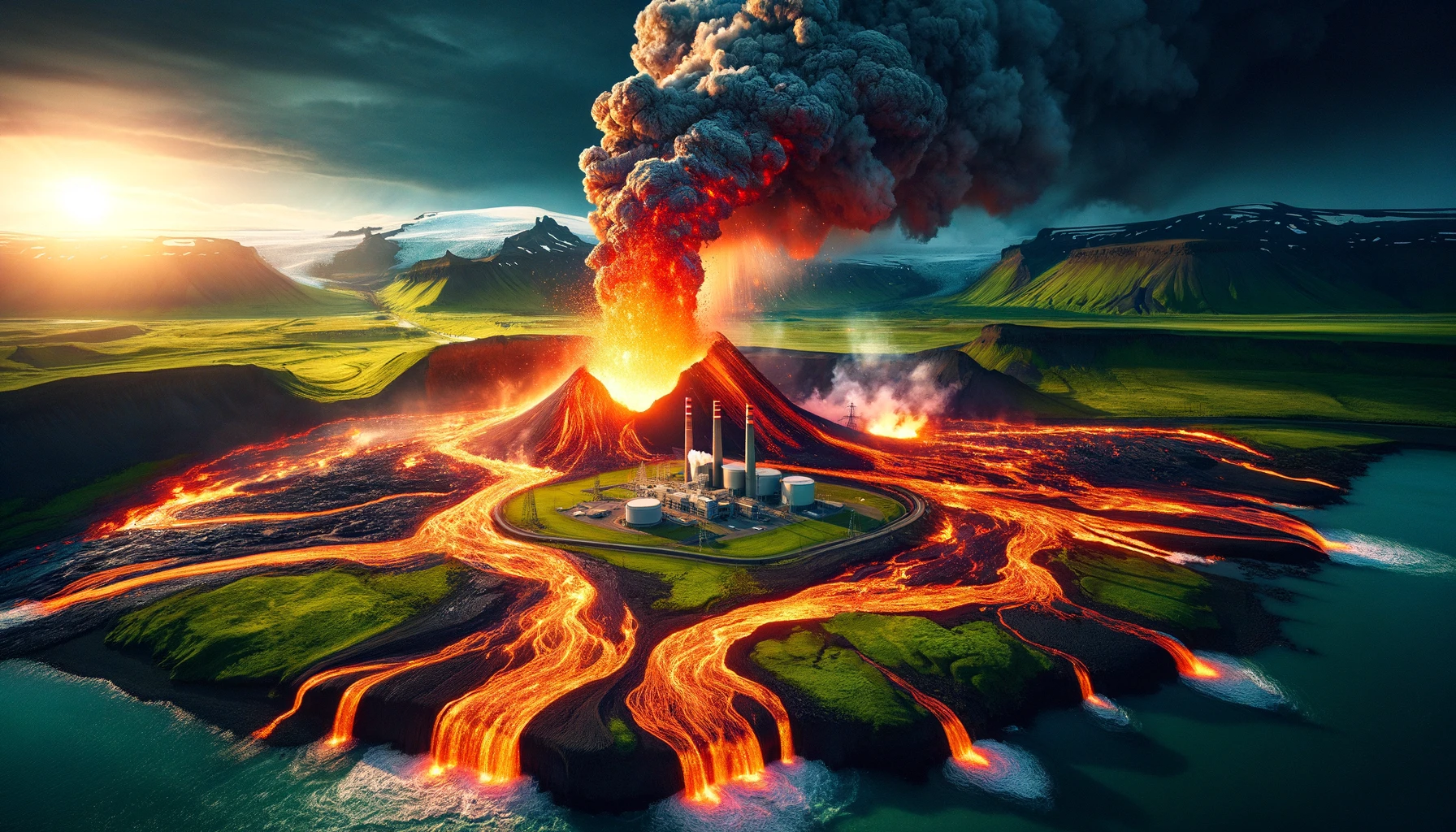Witness the awe-inspiring yet alarming eruption of an Icelandic volcano for the second time this year, as lava flows perilously close to a power plant.

In the serene landscapes of Iceland, a land known for its majestic natural beauty, the earth has once again reminded us of its raw power and unpredictability. As the news breaks of a volcano erupting for the second time this year, with lava streams inching dangerously close to a crucial power plant, it’s hard not to feel a mix of awe and anxiety. Imagine standing on the edge of creation and destruction, where the ground beneath your feet tells the ancient stories of our planet’s fiery heart.
The Power and Beauty of Nature
Have you ever watched a volcano erupt on TV or online and felt a shiver down your spine? It’s a stark reminder of nature’s dual nature: both creator and destroyer. Iceland’s recent volcanic activity is a real-time drama unfolding before our eyes, showcasing the planet’s incredible force and beauty.
The Eruption: A Closer Look
This isn’t the first time we’ve witnessed the earth’s temper in Iceland, and it likely won’t be the last. But what makes this eruption so noteworthy is its proximity to human civilization, specifically a vital power plant. The visual of molten lava creeping close to such an essential facility is something out of a suspenseful movie, except this is real life.
Risks to Infrastructure
The juxtaposition of natural forces against human engineering is a humbling sight. It raises questions about our preparedness and resilience in the face of nature’s might. How do we protect crucial infrastructure without compromising the natural world, which follows its own, ancient rules?

Community Response
In times of natural disasters, the spirit of a community is truly tested. Iceland’s response to this volcanic threat showcases the resilience and unity of its people. From emergency services to everyday citizens, everyone plays a part in safeguarding their homeland.
The Role of Emergency Services
The bravery and readiness of emergency services during such events cannot be overstated. Their swift actions and strategic planning are critical in minimizing damage and ensuring public safety. It’s a reminder of the importance of supporting these essential teams.
Environmental Impacts
While eruptions are natural events, they can have significant environmental impacts. The release of ash and gases can affect air quality and climate, not to mention the immediate alteration of the landscape. Understanding these effects is crucial for future preparedness.

The Science Behind the Eruption
Volcanic eruptions aren’t random; they’re the result of complex geological processes. By studying these events, scientists can better predict future eruptions and potentially save lives. This eruption offers valuable data for ongoing volcanic research.
Historical Context
Iceland’s history is deeply entwined with volcanic activity. Each eruption adds a new layer to this rich tapestry, reminding us of the island’s dynamic and ever-changing nature.
Safety Measures
In the shadow of the volcano, safety becomes a paramount concern. The implementation of evacuation plans and public awareness campaigns are essential steps in protecting communities from future eruptions.
The Future of Volcanic Research
This event underscores the need for continued investment in volcanic research and monitoring. By understanding the warning signs of eruptions, we can better protect our communities and infrastructure.
Conclusion
As the dust settles and the lava cools, we’re reminded of the delicate balance between humanity and nature. Iceland’s recent volcanic eruption is a powerful lesson in respect, preparedness, and resilience. As we move forward, let’s carry these lessons with us, mindful of the earth’s power and our place within it.

FAQs
What causes volcanic eruptions?
Volcanic eruptions occur due to the movement of tectonic plates and the accumulation of pressure from molten rock beneath the earth’s surface, seeking an escape.
How can communities prepare for volcanic eruptions?
Preparation involves creating evacuation plans, raising public awareness, and ensuring robust communication systems are in place to alert residents of imminent danger.
What are the environmental impacts of volcanic eruptions?
Eruptions
can lead to air pollution from ash and gases, affect climate patterns, and alter landscapes, potentially affecting local ecosystems.
Can volcanic eruptions be predicted?
While predicting the exact timing of eruptions is challenging, monitoring volcanic activity and geological signs can provide critical warnings.
How do emergency services respond to volcanic eruptions?
Emergency services implement evacuation orders, secure at-risk areas, and provide aid and information to the affected populations, prioritizing public safety.
Through simple language and an emotional tone, this article aims to not only inform but also connect with readers, emphasizing the awe-inspiring yet sobering reality of living with nature’s formidable forces.
Sources The Guardian


